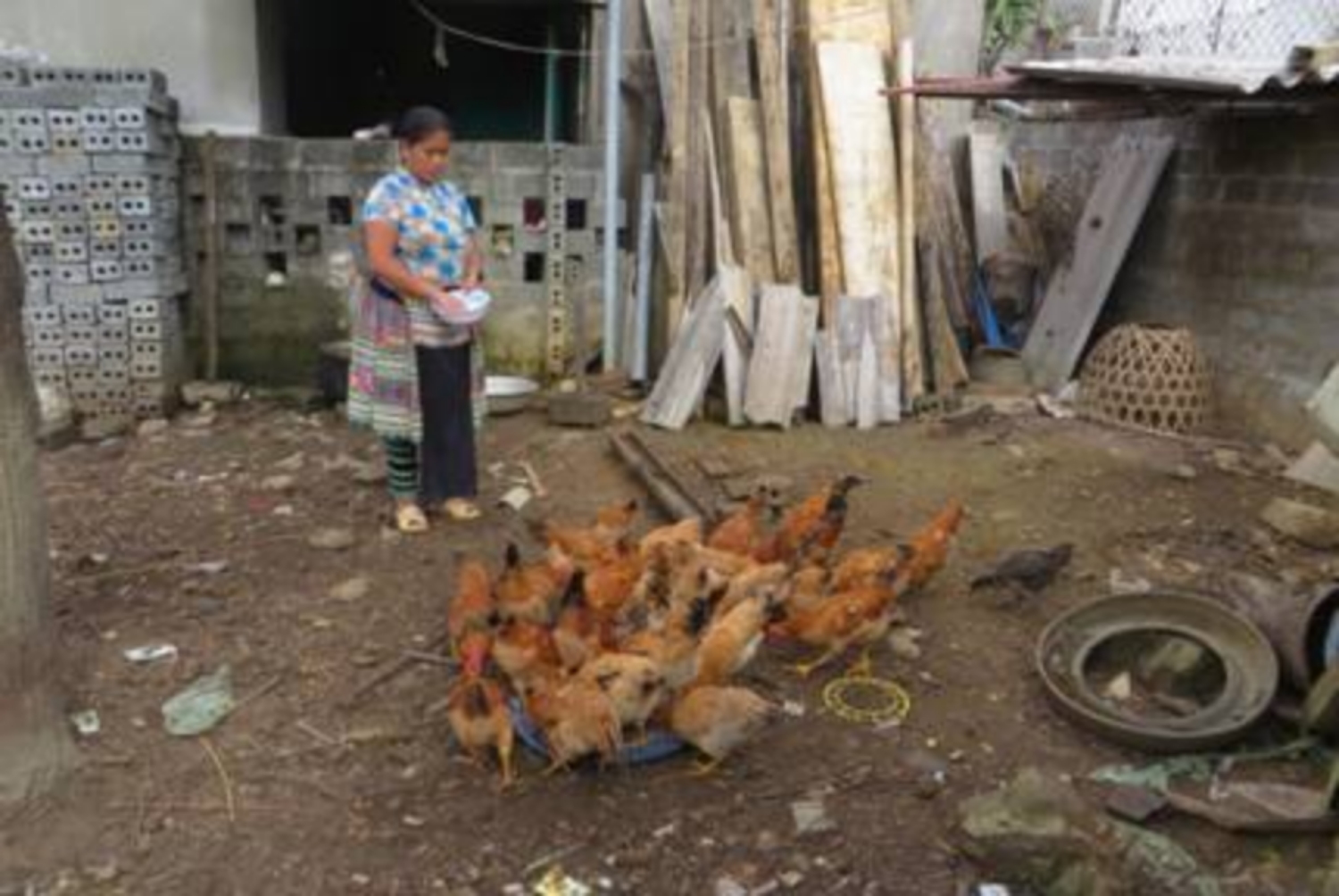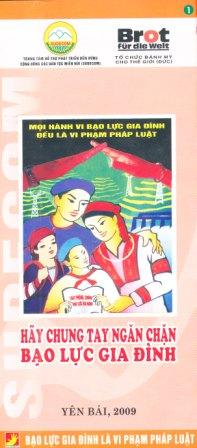Increasing income for poor households belonging to Mong ethnic minority in Suoi Bu commune through backyard chicken keeping

To implement the model of backyard chicken keeping, the households contributed materials and labor to make cages for chicks, cages for them when they are grown-up, backyard for chickens, money to buy more preventive and therapeutic drugs for chickens. The project has encouraged the sense of responsibility, self-help cooperation and utilized the available potentials of the household to make the model more sustainable.
SUDECOM organized 2 training courses on techniques of raising backyard chickens for 40 poor households. After being trained, 95% of trainees applied backyard chicken keeping techniques effectively. The project has supported 1400 chicks and 7,840 kg of bran for chickens. The rate of harvest is 95%. After more than 3 months of backyard chicken keeping, each chicken weights from 1.6 kg to 2.2 kg. Each household got from 7 million to 7.5 million of Vietnamese dong from backyard chicken keeping (including chickens that have been used as food for their own families). After subtracting the expenses of chicks and bran, each household profited of about from 3.5 million to 4 million of Vietnamese dong on average, meeting the planned target of the project.
The model of backyard chicken keeping is an effective model of poverty reduction to ethnic minority people. The reasons are as follows: The first, invested capital is not big. The second, it is easy for villagers to learn and do. The third, housholds can take advantage of their extra labor to care for chickens. The fourth, chicken keeping does not take long time, so capital turnover is fast. Besides, chicken is used as daily food in locals, so it is easy to sell chickens.
Models that supported by the project not only helped poor housholds to get more income but also make them to have habits of applying science and technology in husbandry. This will help their animal husbandry gain high economic efficiency.


Reader Comments
Newer articles
Older articles
The Center for Sustainable development of mountainous communities (SUDECOM)
The Center for Sustainable development of mountainous communities (SUDECOM) Address: Alley 332 - Dinh Tien Hoang Street, group 13, Yen Thinh ward, Yen Bai city, Yen Bai province Telephone: (+84) 2163851198 – Fax: (+84) 2163892397; E-mail:Office.sudecom@gmail.com The Center for Sustainable...
 SUDECOM
SUDECOM Increasing income for poor households belonging to Mong ethnic minority in Suoi Bu commune through backyard chicken keeping
Increasing income for poor households belonging to Mong ethnic minority in Suoi Bu commune through backyard chicken keeping Launching Workshop of Project N-VNM-2019-3036 (2019-2022)
Launching Workshop of Project N-VNM-2019-3036 (2019-2022) Announcement of the selection of sub-grantees implementing two lots of the Action EU/ Participation (Reference number: CSO-LA/2019/409-730)
Announcement of the selection of sub-grantees implementing two lots of the Action EU/ Participation (Reference number: CSO-LA/2019/409-730) Activity of monitoring coops for chicks
Activity of monitoring coops for chicks The road connecting the joys of local people in Ta Chu and Pa Te villages in Tuc Dan commune of Tram Tau district
The road connecting the joys of local people in Ta Chu and Pa Te villages in Tuc Dan commune of Tram Tau district SUPPORTING STRAW MUSHROOM CULTIVATION MODEL FOR POOR HOUSEHOLDSIN LUONG THINH COMMUNE
SUPPORTING STRAW MUSHROOM CULTIVATION MODEL FOR POOR HOUSEHOLDSIN LUONG THINH COMMUNE Support nutrient bran, mixture bran and corn bran to raise chicken
Support nutrient bran, mixture bran and corn bran to raise chicken Project Support for developing model of growing safe vegetable to improve income contributing on poverty reduction for poor ethnic minority households at Tan Nguyen commune, Yen Binh district, Yen Bai province.
Project Support for developing model of growing safe vegetable to improve income contributing on poverty reduction for poor ethnic minority households at Tan Nguyen commune, Yen Binh district, Yen Bai province. The inception workshop of the project “Support for developing backyard chicken raising to improve income contributing on poverty reduction for ethnic minority poor households at Phuc An commune, Yen Binh district, Yen Bai province.
The inception workshop of the project “Support for developing backyard chicken raising to improve income contributing on poverty reduction for ethnic minority poor households at Phuc An commune, Yen Binh district, Yen Bai province.




